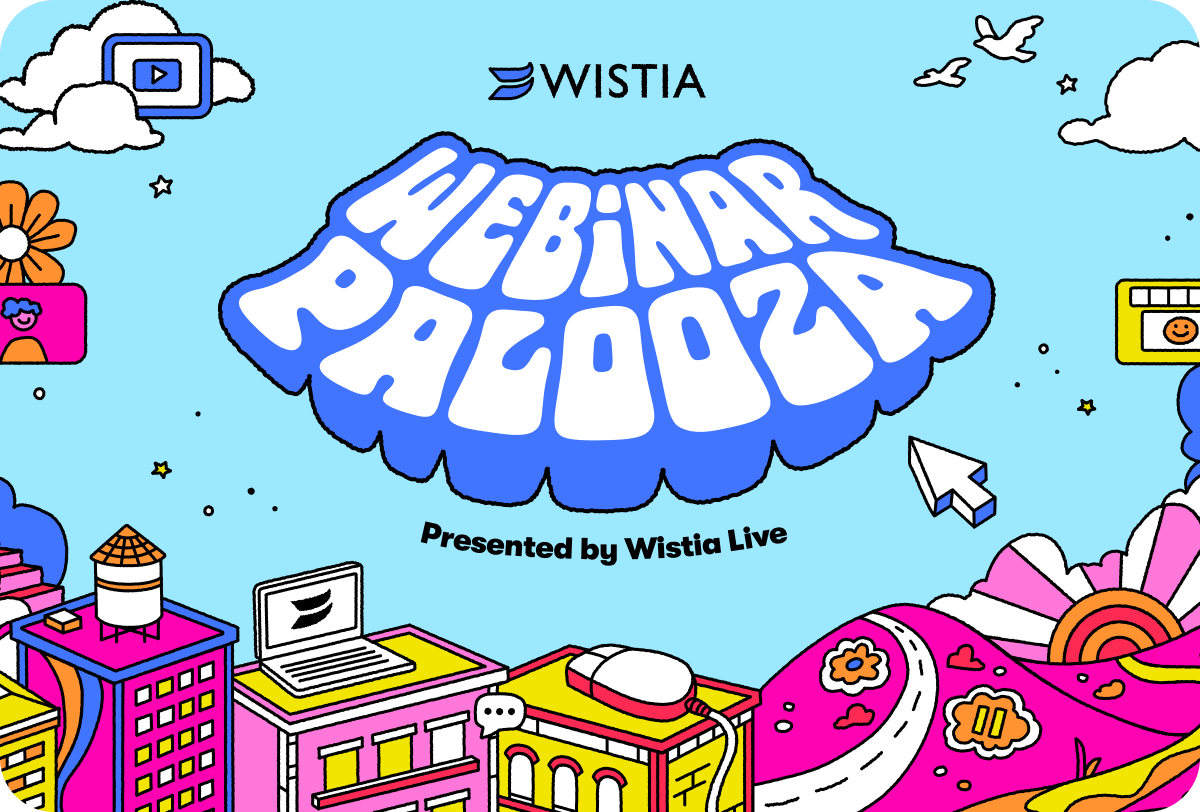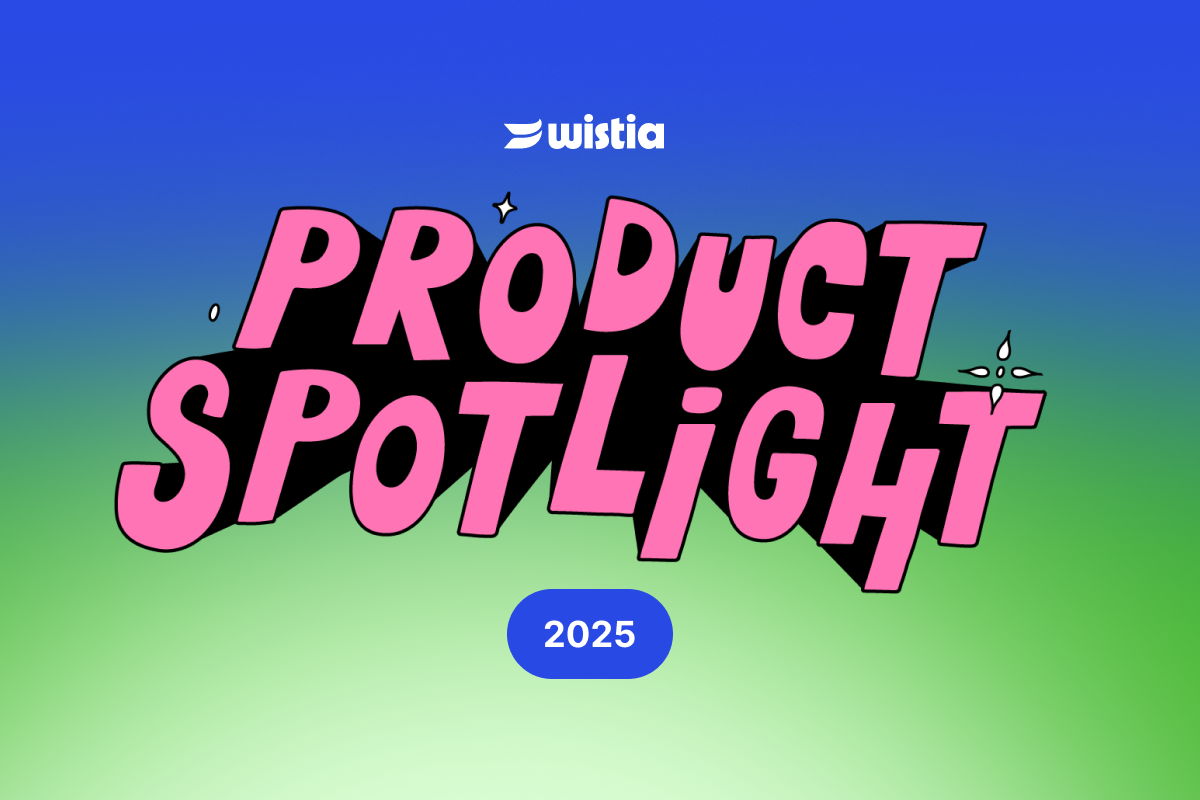Building a Business in the Shadow of a Giant
October 29, 2015
Topic tags
Wistia, DuckDuckGo, Quip… what do we all share in common?
Wistia is a video hosting service that people pay for when they could use YouTube for free. DuckDuckGo is a search engine in a world where search is literally synonymous with Google. Quip is launching up against the might and ubiquity of Google Docs.
We’re all companies that were built in the looming shadow of Google’s behemoth giant, that by all logic should’ve been stomped out and crushed like the tiny worms we were. But we’re not only surviving, we’re thriving.
In fact, we have a secret to share — some of the biggest opportunities today live within stumbling distance of the monsters of tech. Since most fear to tread in this arena, few companies dare to play in these billion-dollar markets.
Interestingly, YouTube, a company that some might consider our greatest nemesis, has actually been our greatest protector and closest friend. It’s the boogeyman that scares away competition, and the tidal wave that lifts all of our boats, carrying us higher and farther than we could’ve possibly gone on our own.
“Interestingly, YouTube, a company that some might consider our greatest nemesis, has actually been our greatest protector and closest friend.”
YouTube set the price at free
YouTube made $4 billion last year and didn’t turn a profit. It has virtually unlimited access to capital as a subsidiary of Google, and its massive scale means that it can offer the best price on Earth — free.
We’ve heard it a million times: “Why would I pay for Wistia when I can use YouTube to host my videos for free?” With YouTube, you get an unlimited number of videos and unlimited bandwidth 100% free, and that’s pretty insane.
Free is very, very hard to compete with. At Wistia, with the high price of video hosting and bandwidth, we weren’t able to offer a rival free plan until we’d been in business for six long years, built up a solid base of customers to grow from, and refined a reliable revenue engine.
Competing with free has been one of our biggest challenges — but it’s also been a blessing in disguise. With a $0 service, YouTube has totally eradicated the competition and made video hosting look like a very unappealing market for prospective entrants. The video giant has given us the time and space we’ve needed to focus on building a solid business for the long term.
Email has been an interesting parallel market
While Gmail is free to use, you can only send out a single email to 500 recipients max. Most companies need more recipients than that, so an entire industry was born to take care of those businesses’ needs — email marketing.
From MailChimp to Constant Contact to AWeber, there are tons of options for email marketers, each offering its own mix of features and pricing. These companies have built their businesses without having to worry about an 800-lb gorilla obliterating the market with a completely free service.
This sounds really great for the companies in this market, but it actually amounts to a daily struggle. Because there’s no unlimited free option available, what’s resulted is a highly competitive market in which it’s very difficult to stand out. The barrier to entry is lower, so new entrants join every day, each eager to lop off part of your business and make it their own.
YouTube defined performance baselines
The YouTube experience has become so ubiquitous that people take its technology for granted. It’s easy to forget that YouTube is a modern technological marvel, and that pre-YouTube, we had to sit around and wait for RealPlayer to load to watch video on the web.
RealPlayer was super fun. Oh wait.
YouTube has established an incredibly high standard for performance. Thanks to their model, super fast playback and upload speeds are what people have come to expect from online video. Offer anything less, and people get frustrated quickly, as they’re so used to YouTube’s user experience that any buffering or queuing feels agonizingly slow.
This may sound trite, but this engineering marvel has made the table stakes for the video hosting industry very high. We’re forced to keep step with YouTube’s legion of thousands, when we’re only a small team of 10 engineers. We need 24–7 vigilance to maintain system reliability and uptime.
Yet, while that’s created hard work for us, we’re actually grateful to YouTube for doing the hardest work of all. They’ve pushed the web forward and made it an amazing place for video. At Wistia, we couldn’t have pulled that off by ourselves, and trying might have led to our demise.
“They’ve pushed the web forward and made it an amazing place for video.”
Before 2005, the web was incredibly hostile to video. You had to download it and watch it locally or stream it with appalling software like RealPlayer or Windows Media Player. Standards were fragmented across browsers, and it was difficult for developers to build a video experience on the web.
YouTube led the charge to use Flash and then HTML5, and it brought the browsers with them. The purchase and subsequent runaway success of YouTube ensured that Google was deeply invested in video. They created open standards and open source technology that benefited every company working in the space. They’ve done nothing short of transform the way people experience the internet — and as that continues, all we need to do is keep up.
YouTube grew at an unprecedented rate
YouTube came out of beta in late 2005 with a $3.5 million seed round, upgraded servers, and increased bandwidth to give the site room to grow. And it did — quickly: by the summer of 2006, it was the fifth most visited site on the internet, with 20 million visitors a month. In 2007, YouTube consumed as much bandwidth as the entire internet did in 2000.
Paul Graham of Y Combinator says that billion-dollar startups get made out of hitting 10% growth per week. In parts of summer 2006, YouTube hit an absolutely stunning 75% per week. It was one of the fastest growing websites in the history of the internet.
This process was hastened by a late-2005 Nike ad that became YouTube’s first million-hit sensation, and the 2006 partnership deal they struck with NBC. Businesses began uploading their own videos in droves. Even small companies got in on it — more than 20 million people have now viewed this Dollar Shave Club promo.
And it was around the time of YouTube’s explosive growth in mid-2006 that Brendan and I launched a little video hosting site for businesses called Wistia. We must have been insane — YouTube was taking the entire market for online video.
It didn’t quite make sense then, but looking back, we probably launched at exactly the right time.
Wistia couldn’t have made any money before YouTube showed up. Before YouTube, few businesses were privy to the benefits of online video. In transforming the market, YouTube showed everyone around the world the power and potential of this medium, both for cats and for businesses.
Being there at the start of the wide, rising tide of online video is what created the opening for Wistia. We had an opportunity to go deeper on one segment of this market and create specialized features that YouTube would never build as a broad-based platform. We produced tools to help businesses use their videos to capture leads and increase signups. We created a learning center and hired video producers to help businesses get better behind the camera. We formed a support team to answer every query that came in.
“We had an opportunity to go deeper on one segment of this market and create specialized features that YouTube would never build as a broad-based platform.”
All along the way, we were bolstered by the growing interest in online video. Whenever someone saw an awesome viral video on YouTube, they’d get inspired to create a video for their own business. Then they’d find us.
Learning to love the giant
Successful companies don’t come entirely out of the sheer will and grit of the entrepreneurs who started them. The truth is that we’re all benefiting from the work of other entrepreneurs and companies — especially those in the markets that are related to our own. What looks like competition often amounts to companies working to grow the market size, so that there’s greater abundance, more wealth, and increased opportunity for everyone.
Even though everyone thought we were crazy to compete with YouTube back in 2006, we were always standing on their shoulders rather than going toe-to-toe. But by offering a more flexible and targeted product, designed just as a B2B offering rather than something for everyone on the planet, we’ve grown dramatically.
YouTube unlocked the power of online video — they allowed people to upload video from their camcorders and phones and share it with billions of people all over the world. Businesses saw this, knew they could get some use out of it, and began exploring. But while YouTube is focused on pleasing everyone, and doing so in a clean and user-friendly way, we’re just focused on making better tools for businesses using video for marketing, and this has been the key to our success — we’ve taken to take the power that YouTube gave businesses and make it even stronger.
Today, online video is becoming a market worth hundreds of billions of dollars. While YouTube is focused on taking the lion’s share of it by disrupting the trillion dollar TV advertising industry, they’ve left a multi-billion dollar industry for business video hosting in their wake. It’s too small for YouTube to bother with, but this small expanding wedge of the pie is the whole reason that Wistia is thriving today.
We can prioritize features that YouTube can’t, we can invest in integrations and partnerships which don’t make business sense for them, and we can own our little corner of the online video market by helping businesses get more value from their increasing investment in video.
“It’s too small for YouTube to bother with, but this small expanding wedge of the pie is the whole reason that Wistia is thriving today.”
Just as the canopy layer of trees in a rainforest provides the shelter and protection for the understory layer to thrive, so YouTube’s growth has created the demand and space for our core market.
So, thanks YouTube. You’re alright with us.






